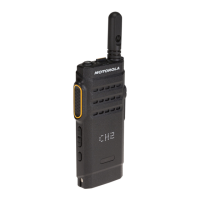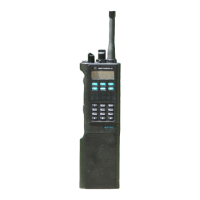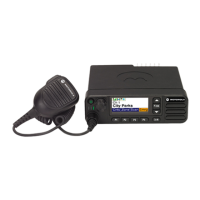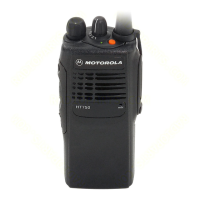RF Energy Exposure Awareness, Control Information, and
Operational Instructions for Occupational Use
NOTICE: This radio is intended for use in occupational/controlled conditions where users have
full knowledge of their exposure and can exercise control over their exposure to meet the
occupational limits in FCC/ICNIRP and International standards. This radio device is NOT
authorized for general population consumer use.
This two-way radio uses electromagnetic energy in the radio frequency (RF) spectrum to provide
communications between two or more users over a distance. It uses radio frequency (RF) energy or
radio waves to send and receive calls. RF energy is one form of electromagnetic energy. Other forms
include, but are not limited to, sunlight and x-rays. RF energy, however, should not be confused with
these other forms of electromagnetic energy, which when used improperly, can cause biological
damage. High levels of x-rays, for example, can damage tissues and genetic material.
Experts in science, engineering, medicine, health, and industry work with organizations to develop
standards for safe exposure to RF energy. These standards provide recommended levels of RF
exposure for both workers and the general public. These recommended RF exposure levels include
substantial margins of protection.
All Motorola Solutions two-way radios are designed, manufactured, and tested to ensure that they
meet government-established RF exposure levels. In addition, manufacturers also recommend specific
operating instructions to users of two-way radios. These instructions are important because they inform
users about RF energy exposure and provide simple procedures on how to control it.
Refer to the following websites for more information on what RF energy exposure is and how to control
your exposure to assure compliance with established RF exposure limits:
http://www.fcc.gov/oet/rfsafety/rf-faqs.html
http://www.osha.gov/SLTC/radiofrequencyradiation/index.html
RF Exposure Compliance and Control Guidelines
Always adhere to the following procedures to control RF exposure to yourself and others and also to
comply to the occupational/controlled environment exposure limits.
• Do not remove the RF Exposure Label from the device.
• User awareness instructions should accompany device when transferred to other users.
• Do not use this device if it does not meet the operational requirements.
Operating Instructions
• Transmit no more than the rated duty factor of 50% of the time. To transmit (talk), push the Push-
To-Talk (PTT) button. To receive calls, release the PTT button. It is important to transmit 50% of the
time or less, because this radio generates measurable RF energy exposure only when transmitting.
• Hold the radio in a vertical position in front of the face with the microphone (and other parts of the
radio including the antenna) at least 2.5 cm (one inch) away from the nose or lips. Keep the
antenna away from the eye. Keeping the radio at a proper distance is important as RF exposure
decreases with increasing distance from the antenna.
• When worn on the body, always place the radio in a Motorola Solutions-approved clip, holder,
holster, case, or body harness. The use of non-Motorola Solutions-approved accessories may result
in exposure levels exceeding the IEEE/ICNIRP occupational/controlled environment RF exposure
limits.
MN002952A01-AH
Safety Information
16
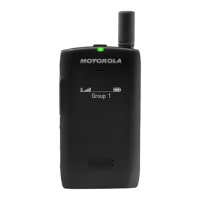
